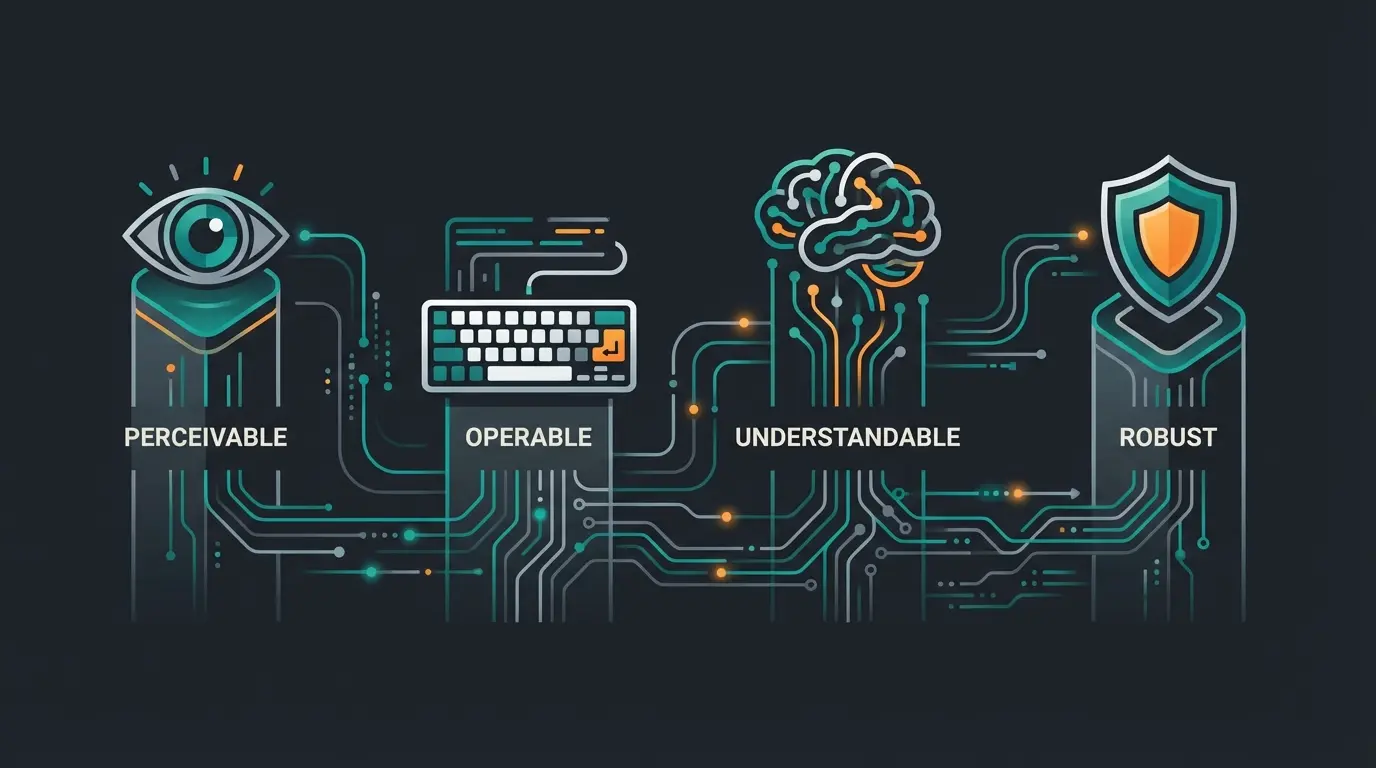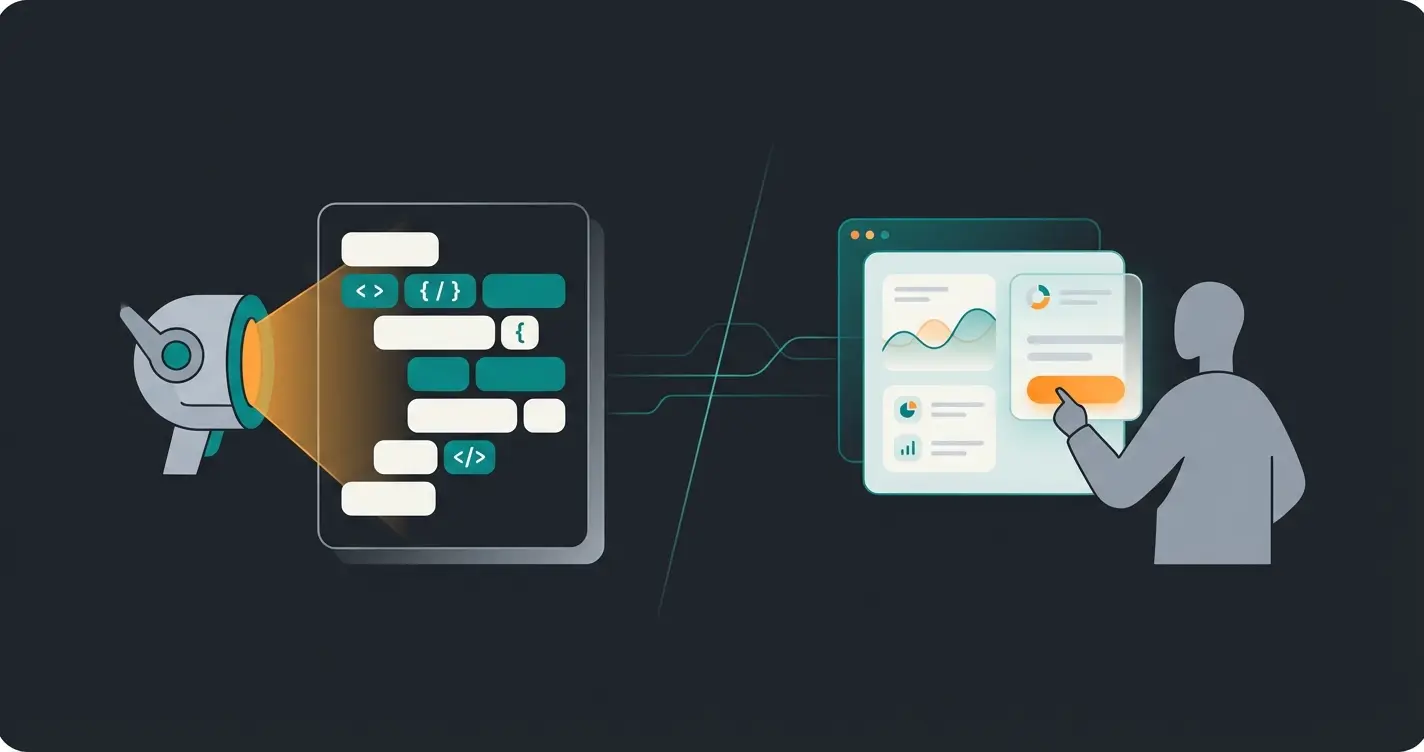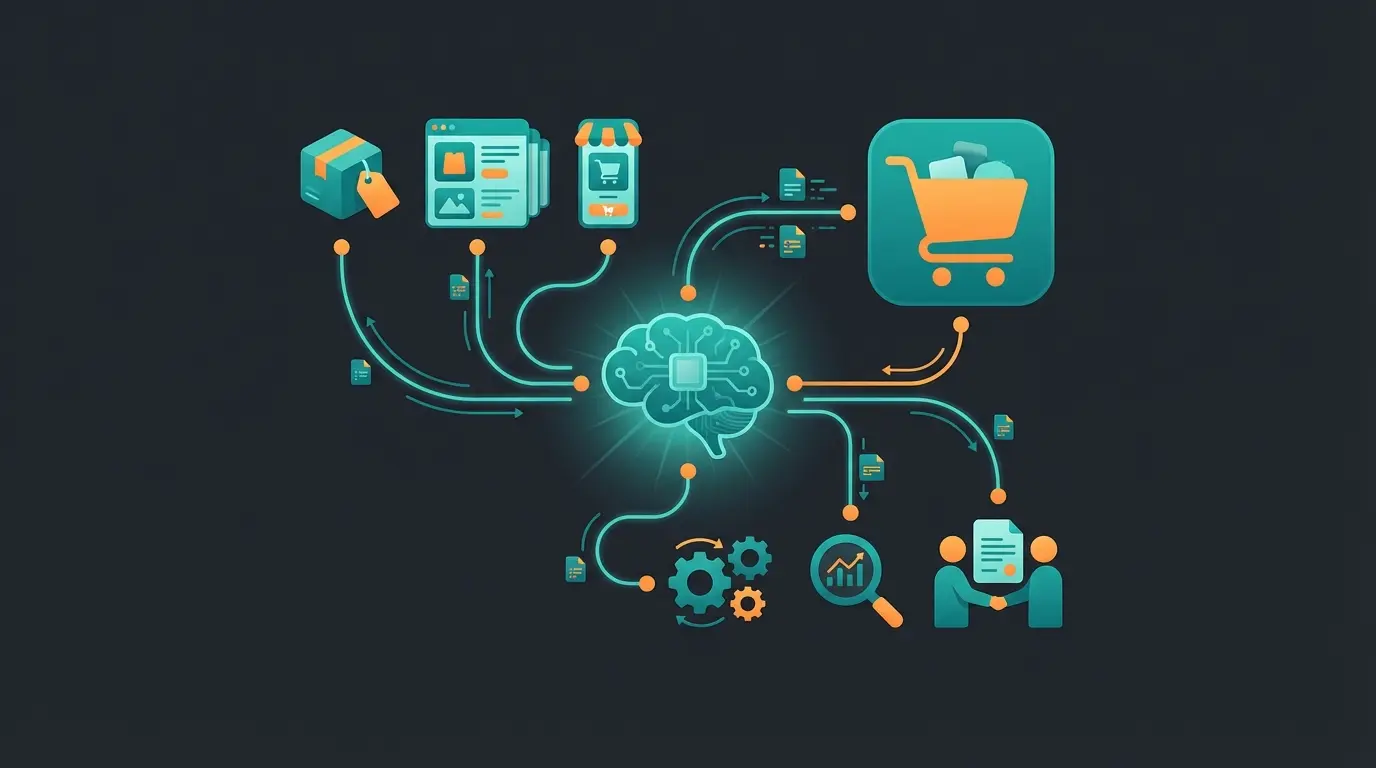Accessibility in E-Commerce: Why True Inclusion Goes Beyond Compliance (BFSG 2025)
Prepare for the BFSG 2025 deadline. Discover how AI transforms accessibility from a compliance burden into a commercial opportunity through active product consultation.
In our increasingly networked society, digital accessibility is gaining more and more importance. It is the key to including all people in the digital age, enabling everyone to participate equally in digital life, regardless of physical or cognitive limitations. According to statistics from IT-Daily, 10.4 million people with disabilities live in Germany, and worldwide the figure is around 1 billion. These impressive numbers underscore the urgency of designing digital offerings to be accessible to everyone.
Digital accessibility means that websites, apps, and digital documents are designed so that they can be used by anyone—regardless of any impairments. This includes not only people with obvious disabilities but also older people or individuals with temporary limitations. Implementing accessibility in the digital space is not just an ethical obligation but also a significant economic opportunity, as it expands the user base and improves general usability.
In this context, Artificial Intelligence (AI) plays an increasingly critical role. It offers innovative solutions to make digital content more accessible and break down barriers. From automatic image descriptions to intelligent text-to-speech functions, AI is revolutionizing the way we implement and experience digital accessibility.
What is Digital Accessibility Today? (The Basics)
Digital accessibility is a comprehensive concept aimed at making digital content and technologies accessible and usable for all people, regardless of their physical or cognitive abilities. According to the Web Content Accessibility Guidelines (WCAG), the international standard for accessible web design, digital accessibility is based on four fundamental principles (POUR):
- Perceivable: Information and user interfaces must be presented in a way that can be perceived by all users. This includes, for example, text alternatives for images, subtitles for videos, or the ability to adjust contrast.
- Operable: All functions of a website or app must be operable with various input methods, not just with a mouse, but also with a keyboard or voice control.
- Understandable: Information and the operation of the user interface must be understandable for all users. This includes clear and simple language as well as consistent navigation.
- Robust: Content must be robust enough to be reliably interpreted by a wide variety of user agents, including assistive technologies.

Digital accessibility goes far beyond the needs of people with disabilities. It improves the user experience for everyone by increasing the accessibility and usability of digital offerings. An accessible design can, for example, help older people who may have difficulties with small text, or people in noisy environments who rely on subtitles.
Implementing digital accessibility requires a holistic approach that takes technical, design, and content aspects into account. It is about designing digital products to be inclusive from the ground up, rather than adding accessibility as an afterthought. This leads not only to better results for people with disabilities but often to innovative solutions that benefit all users.
The foundation: Semantic HTML, correct heading structures, and ARIA labels readable by machines.
The interface: Sufficient color contrast, readable font sizes, and clear visual hierarchy.
The future: AI Consultation that actively guides users to solutions, bypassing complex navigation entirely.
In a time when digital technologies are permeating more and more areas of life, from education to healthcare to public services, digital accessibility is becoming a question of social justice and equal opportunity. It enables all people to participate equally in digital society and benefit from the advantages of digitalization.
The Law (BFSG 2025): What Applies from June 2025
The legal frameworks for digital accessibility have gained significant importance in recent years. The Barrierefreiheitsstärkungsgesetz (BFSG) was passed in Germany in July 2021 to implement the European Accessibility Act. This law marks a milestone in efforts to make digital offerings accessible to all people.
Alongside the BFSG, international standards also play an important role. The Web Content Accessibility Guidelines (WCAG) are an internationally recognized standard for accessible web design. The WCAG offer concrete guidelines and testable success criteria on three levels (A, AA, AAA), with EU standards establishing levels A and AA as mandatory criteria.
The legal requirements present companies and organizations with new challenges but also offer chances for a more inclusive digital world. They force developers and designers to integrate accessibility into their products and services from the beginning, which ultimately benefits all users.
Don't wait for the deadline. Start integrating true accessibility now and tap into a new market.
Check Accessibility SolutionsWhy WCAG Standards Are Only the Beginning (The Pivot)
Despite legal requirements and growing awareness of the importance of digital accessibility, many companies and organizations face considerable challenges in implementation. A test by Aktion Mensch revealed that only 20% of the online shops examined could be classified as accessible. This sobering figure illustrates the great need for action in this area.
One of the main difficulties lies in technical implementation. Many websites and digital offerings were not designed to be accessible from the ground up, making retroactive adaptation complex and costly. Ensuring full keyboard operability is particularly challenging—an essential criterion for accessibility that is not met in many cases.
But here is the critical gap in the current conversation: A website can be technically compliant with WCAG (the code is correct) yet still be a nightmare to use. Imagine a blind user trying to filter through 500 laptops using a screen reader on a standard 'compliant' table. They have to listen to every row, column, and filter option. It is compliant, but it is painful.
Another obstacle is the often lacking awareness and expertise within companies. The complexity of the topic and the multitude of aspects to consider overwhelm many developers and designers. Additionally, there is often a lack of resources and budget for comprehensive accessibility measures, especially in smaller companies.
The dynamics of the digital world present an additional challenge. Constantly new technologies and trends require continuous adaptation and verification of accessibility. Automated tests alone are not enough. According to a study cited in IT-Daily, automated tests capture only about 30% of accessibility problems. Manual tests by people with disabilities are therefore indispensable, which in turn requires time and resources.
Artificial Intelligence as a Game-Changer for Digital Inclusion
Artificial Intelligence (AI) is revolutionizing the landscape of digital accessibility and opening new possibilities for inclusive access to the digital world. As a powerful technology, AI offers innovative solutions for many of the challenges people with disabilities face in the digital space.
A main advantage of AI lies in its ability to recognize and process complex patterns. This makes it possible to adapt and transform digital content in real-time to make it accessible to various user groups. For example, AI can convert text to speech, describe images, or translate complex information into simpler formats.
The adaptability of AI systems is another decisive factor. Artificial intelligence like upcoming GPT-5 release is expected to have improved multimodal capabilities such as speech and image processing. This means that AI systems are capable of processing various types of input and responding accordingly, making them particularly valuable for supporting people with different disabilities.
Case Study: How Product Consultation AI Removes Barriers
Let's move beyond 'AI for testing code' and look at AI for Interaction. Consider a user with a motor impairment who struggles to click small filter buttons or navigate complex dropdown menus. In a traditional shop, this user might abandon the purchase due to the physical effort required.
With an AI Product Consultant, the scenario changes completely. The user simply types or speaks: "I need a washing machine for a small family, under 500€." The AI understands the context, filters the database instantly, and presents the best options directly. The 'navigation' is no longer a physical hurdle of clicks; it is a conversation.
| Criterion | Passive Compliance (Standard WCAG Site) | Active Inclusion (Site with AI Consultant) |
|---|---|---|
| Product Search | User must manually navigate menus and filters. | User states intent; AI finds the product. |
| Navigation Effort | High (Requires precise mouse/keyboard inputs). | Zero (Conversational interface). |
| User Feeling | "I am fighting the interface." | "I am being served." |
| Inclusion Level | Technically accessible but exhausting. | Truly inclusive and effortless. |
AI-Supported Solutions for Improved Accessibility
AI offers a multitude of applications that can significantly improve digital accessibility. Here are some of the most important areas where AI is already having a major impact:
Automatic Image Descriptions and Alt-Texts
AI systems can automatically generate detailed and context-relevant descriptions for images. This technology is particularly valuable for blind and visually impaired users who rely on screen readers. The AI analyzes the image content and creates meaningful alt-texts that convey the essential elements and meaning of the image. This enables users to understand visual content without being able to see it.
AI-Based Subtitling and Transcription
Advanced AI algorithms can convert speech to text in real-time, capturing nuances like tone of voice and emotions. This technology is used in automatic subtitling systems for videos and live streams, significantly improving access for deaf and hard-of-hearing people. An example of this is the app Live Transcribe, which offers free real-time speech-to-text transcription for Android devices.
Voice Recognition and Output
AI-supported voice recognition systems allow users to control digital devices and applications solely through voice commands. This is particularly useful for people with limited mobility or visual impairments. At the same time, AI systems can convert written text into natural-sounding speech, improving the accessibility of written content for blind users or people with reading difficulties.
Adapting Content to Individual Needs
AI systems can dynamically adapt content to the specific needs and preferences of individual users. This can include simplifying texts for people with cognitive limitations, adjusting color contrasts for users with visual impairments, or optimizing navigation elements for people with motor limitations. AI Employees can understand and process natural language and give personalized recommendations, further improving the user experience.
A concrete example of the use of AI in digital accessibility is the app Seeing AI. This free application uses AI to describe the world for blind and visually impaired users. It can read texts, identify products, and even interpret facial expressions.
WhatsApp Bots can conduct more natural and context-related conversations, which can also be advantageous for accessibility. They can act as personal assistants available around the clock, supporting people with disabilities in navigating through digital services.
These AI-supported solutions demonstrate the enormous potential of technology to make the digital world more inclusive and accessible for everyone. By breaking down barriers and offering personalized support, they enable people with diverse abilities to participate equally in digital life.
Transform your customer experience with an AI that understands every user's needs.
Discover AI ConsultationAI-Supported Accessibility Audits and Optimizations
Artificial Intelligence is not only revolutionizing the user experience for people with disabilities but also the way we check and optimize digital offerings for accessibility. AI-supported tools enable more efficient and comprehensive analysis of websites and digital applications, significantly accelerating and improving the accessibility testing process.
A significant advantage of AI-based testing tools is their ability to process large amounts of data in a very short time. They can scan entire websites and identify potential barriers that could be problematic for people with various disabilities. These tools can, for example, detect missing alt-texts for images, insufficient color contrasts, or inaccessible forms.
However, it is important to emphasize that AI tools cannot completely replace human expertise. According to IT-Daily, automated tests only capture about 30% of accessibility problems. Manual tests by people with disabilities remain crucial for comprehensive accessibility verification. AI tools should be viewed as a complementary resource that supports human experts in their work.

An innovative approach to raising awareness for the topic of digital accessibility was developed by the digital agency denkwerk. Instead of launching another technical testing tool, they chose an empathetic approach. With the help of Generative AI, the personas Claudia and Cosmo were created, who test every entered website on behalf of people with visual or motor limitations. The result is not a technical error report, but an empathy report from the perspective of real people who use the sites and experience frustration when they encounter problems.
AI-supported optimization tools go a step further. They can not only identify problems but also generate solution proposals. These tools can, for example, suggest alternative texts for images, recommend color schemes for better contrast, or make suggestions for improving the navigation structure. These AI-generated suggestions can serve as a starting point for developers and designers to make their digital offerings more accessible.
Ethical Considerations and Limits of AI in Digital Accessibility
While AI undoubtedly offers enormous potential for improving digital accessibility, it is important to also consider the ethical implications and potential limits of this technology. The use of AI in this sensitive area raises important questions that must be carefully weighed.
A central aspect is data protection. AI systems often require large amounts of user data to function effectively. When processing data from people with disabilities, who are considered particularly vulnerable, special caution is required. It must be ensured that this data is stored securely, treated confidentially, and not misused for other purposes.
Another important point is the possible bias of AI systems. If the training data on which the AI is based is not diverse enough or reflects existing societal prejudices, this could lead to discriminatory results. It is therefore crucial that when developing AI systems for digital accessibility, attention is paid to the broadest and most representative data basis possible.
The Federal Agency for Civic Education (bpb) points out further concerns, particularly in the education sector. This includes the possible isolation of students through excessively individualized AI-supported learning programs. It is important to find a balance between individualized learning and the social aspect of group instruction.
Also, the danger of over-reliance on AI systems should not be underestimated. While AI Employees and assistive technologies can undoubtedly be helpful, they must not lead to the neglect of developing real skills and independence.
Finally, there are limits to what AI can achieve in terms of accessibility. Despite all progress, AI cannot completely replace human understanding of the individual needs and experiences of people with disabilities. The involvement of people with disabilities in the development process of digital offerings remains essential.
Future Perspectives: How AI Will Further Revolutionize Digital Accessibility
The future of digital accessibility is marked by artificial intelligence. AI technologies are developing rapidly and promise to fundamentally improve access to the digital world for people with disabilities. According to experts, we are only at the beginning of a revolution that has the potential to raise inclusivity in the digital space to a new level.
Multimodal AI Systems
A promising trend is multimodal AI systems like upcoming GPT-5 release, which can process text, speech, and images simultaneously. This technology could transform the way people with different disabilities interact with digital content. For example, blind users could grasp complex visual content through detailed audio descriptions, while deaf users benefit from precise subtitling and sign language translations.
Personalized AI Assistants
AI Employees and digital assistants will become even more intelligent and adaptable in the future. They will be able to understand the individual needs and preferences of each user and adapt the digital environment accordingly. This could mean that websites and apps automatically adapt to the requirements of the respective user, be it by changing font size, contrast, or navigation method.
Advances in Speech Technology
The further development of speech technologies will revolutionize communication for people with speech or hearing impairments. WhatsApp Bots and other AI-controlled communication tools will be able to conduct more natural and context-related conversations. This could lead to a seamless integration of voice control into all aspects of digital life, from using social media to online banking.
Neural Interfaces and Assistive Technologies
In the long term, advances in neurotechnology combined with AI could lead to revolutionary assistive technologies. Direct interfaces between the brain and computer could enable people with severe physical disabilities to control digital devices solely through thought. Although this technology is still in its infancy, it shows the enormous potential of AI to expand the boundaries of digital accessibility.
Conclusion: Accessibility as a Competitive Advantage
The future of digital accessibility through AI promises a world where technological barriers belong to the past. By preparing your shop for the BFSG 2025 and implementing active AI assistance, you are not just avoiding fines—you are opening your doors to millions of customers who have been waiting for an inclusive shopping experience.
The Barrierefreiheitsstärkungsgesetz (BFSG) is a German law implementing the European Accessibility Act. It mandates that e-commerce shops, banking services, and digital products must be accessible to consumers with disabilities by June 28, 2025.
AI tools can help achieve WCAG compliance (e.g., via automated alt-texts), but AI itself is not a replacement for compliant code. However, AI Consultants offer a layer of 'active accessibility' that goes beyond static WCAG standards to improve actual usability.
An AI Consultant allows users to find products through natural conversation rather than navigating complex menus. This removes physical barriers (clicking small buttons) and cognitive load (filtering large lists), making shopping accessible to everyone.
Don't just comply with the law. Use AI to serve every customer better. Get your consultation today.
Start Free Trial
